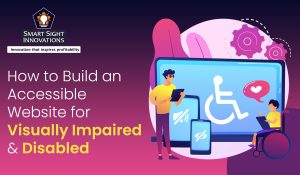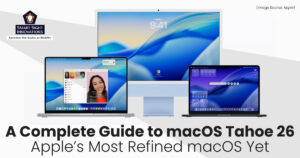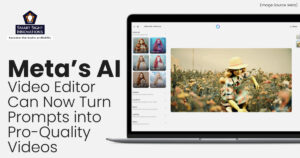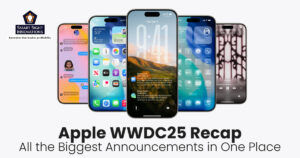 Synopsis: Every website owner everywhere wants to attract maximum visitors. However, they also have to make sure that their site can be used by everyone. There are millions of users out there who rely on sites to be accessible. Understand special needs, businesses have to make it inclusive. It’s about understanding the underlying issues that can make a site difficult or impossible to use by some with visual impairments and other disabilities. Using the right features can make it more welcoming to all visitors as website accessibility is important for everyone.
Synopsis: Every website owner everywhere wants to attract maximum visitors. However, they also have to make sure that their site can be used by everyone. There are millions of users out there who rely on sites to be accessible. Understand special needs, businesses have to make it inclusive. It’s about understanding the underlying issues that can make a site difficult or impossible to use by some with visual impairments and other disabilities. Using the right features can make it more welcoming to all visitors as website accessibility is important for everyone.
There are different forms of visual impairment, ranging from mild to severe. It includes a variety of problems and disabilities, the most prominent being color blindness, low vision, and blindness. Web accessibility for disabled users focuses on how a disabled person can access or take advantage of a site, system, or application. There are many ways in which accessible online content can be presented to enhance usability.
-
Ensure your site is keyboard-friendly
It is the most important step in how to make a website accessible. In simple words, to access a website, it must work without the use of a mouse. Many assistive technologies rely on keyboard-only navigation. Therefore, it should be possible to access all the major features of your site through the keyboard and nothing else. This includes access to all pages, links, content, etc.
The established common way of navigating using the keyboard is with the Tab key. This will jump between areas of the page that may have keyboard focus, including links, buttons, and forms.
Therefore, your goal should be to ensure that all web content and navigation can be accessed using tabs.
-
Choose your colors with care
We all have heard about color blindness. And it’s not just about the black and white tones. It is an array of different shades because different people see colors in unique ways.
Therefore, you need to make sure that the colors you choose on your site contrast well to ensure that everyone can differentiate between the different elements on the webpage.
One of the most important issues is making sure that the text stands out against the background. Avoid using a light background with dark words. Also, you should set a darker color against a lighter color, making sure they don’t mix into each other.
Suppose you want to use a green color scheme. You may want to avoid creating a palette where colors are similar in hue and saturation, such as using lighter and darker versions of the same hue.
For the best visual highlights, using off-white against a dark green background can work well.
-
Use headers to structure your content correctly
Another good way to make your site accessible for everyone is to structure your content using headers carefully. Doing this, it can make your content much easier to understand, grasp and improve the flow.
Plus, the clear headers also help screen readers interpret your pages correctly. It makes it very easy to provide in-page navigation. This is very easy to do because you just need to make sure that you use the correct title levels in your content.
For example, you should only use one H1 per page and it is usually the title of the page. This may be followed by subtitles starting with H2, which can then be combined with H3, followed by H4. All headings should always be used in sequence so you should avoid using H4 directly after H2 and so on.
-
Avoid using automatic media and navigation
Sometimes, media files playing automatically can become a false signal to internet users. It can be annoying to have music or videos suddenly start playing when the page loads. Now, it can be an even bigger issue in terms of accessibility.
There are times when it is difficult to figure out how to turn off media while using a screen reader. Some users may be confused or even frightened by the sudden noise. Therefore, you should avoid including elements that begin without being prompted by the user.
It’s smart to avoid automatic navigation like sliders. It can be very much frustrating if the viewer needs more time to absorb all the information before moving on to the next slide or section.
-
Use video description
Visually impaired people can hear what is happening in the video if they do not have a hearing impairment. And, they can remember details they cannot see.
If you decide to have a video on your site or web app, you can provide a video description that provides the information that a video is showing, but without saying it out in loud tones.
There are some best practices to make it easier to add audio descriptions or even reduce the need for audio descriptions altogether. To make content accessible to visually impaired and low vision audiences,
- Verbalize all relevant visual information.
- Leave enough room for audio description between dialogue or speech
- Identify the speaker so that the audience knows who is speaking
- Verbally describe audience participation so that the audience understands who is speaking when
So, go for a web design that can allow video description wherever necessary.
-
Create alternative text or descriptions for non-text material
Everyone who visits your website will not be able to see the images. Some disabled, visually impaired and blind users may rely on assistive technology such as screen readers or text-to-speech software to process web pages for them.
When a screen-reader reads an image or graphic, it will say “graphic” or “image” and then read the (optional) text of the image. If an image does not contain alternative text, the screen-reader will discard it. So for this reason, it is best to provide alternate text for images and graphics. You can do best with an:
- Aim to keep the description of the video and audio interesting and accurate.
- Always, the screen readers go line-by-line. So convey your point through your text and alt text in minimum words.
- A well-written alternative text can broaden a person’s understanding.
- Create content with accessibility in mind
Coming to the core of your site, it’s all about the content. Designing the reach of your site is also extremely important. You should keep similar considerations in mind when creating content.
This means paying attention to the relatively trivial, such as always writing completely abbreviated words, and making sure you give all of your links unique, descriptive names and anchor text.
If you want your site to be usable by anyone, your content must be accessible and readable, no matter who discovers it.
-
Proper labels, roles and values
Custom controls do not contain any native semantic parts. That’s why you need to make sure you have proper HTML and ARIA labels, roles and values that change when appropriate.
Without labels and roles, screen readers cannot tell users what a widget is or what it does. Adding ARIA labels and roles, such as media volume or expand or collapse buttons, will allow screen readers to access user controls, and use them as they were intended.
ARIA is an Accessible Rich Internet Application. ARIA has a variety of markup extensions, with HTML5 attributes. They can be combined to give screen readers more information about elements and help visually impaired users better understand what is happening on a webpage.
-
User feedback
A screen reader is a technology that helps people who have difficulty accessing and interacting with digital content such as websites or applications through audio or touch.
Therefore, screen reader users need immediate feedback after executing a command. They need to be notified when someone fills out a form, expands or collapses content, or opens a new page or tab with a screen reader.
Appropriate voice feedback enables blind users to navigate the touch-screen interface and different tactile gestures have vastly different effects on the tactile performance of blind users, such as efficiency and accuracy. Ensure your design has the proper features to provide feedback for a screen reader user to hear and grasp.
Bottom Line
Building an ecommerce website accessibility is an inclusive practice. This means ensuring that there is no barrier for any customer who indulges in online shopping.
So when there is a need for a custom ecommerce website development, choose the right firm. After all, it is about building an online store that can be used by everyone, regardless of their age, skill level, location, or presence of a disability.













